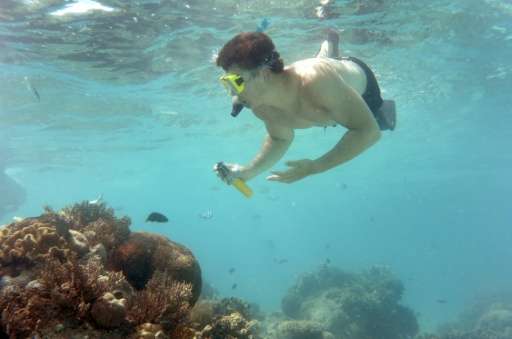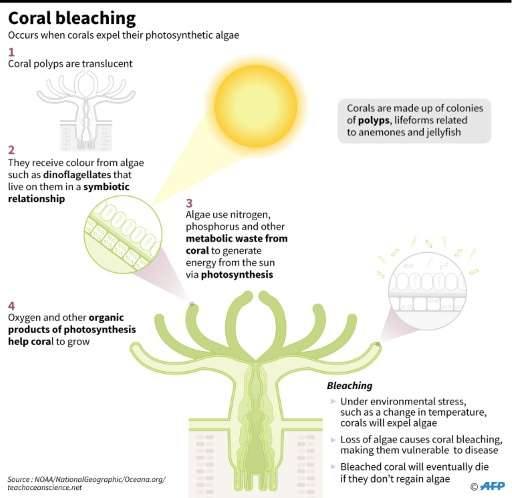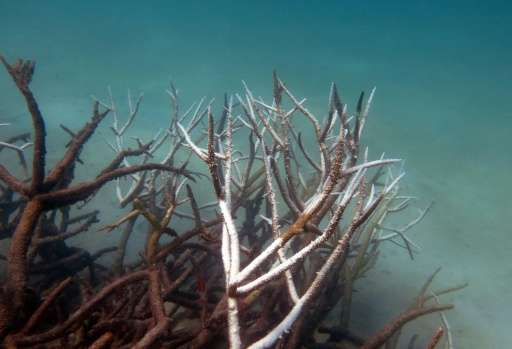Great Barrier Reef bleaching could cost a million tourists

Severe coral bleaching on Australia's Great Barrier Reef could cost it more than a million visitors a year and huge sums in lost tourism revenue, a survey said Tuesday.
The World Heritage-listed reef which teems with marine life experienced an unprecedented bleaching earlier this year that saw much of it whiten and almost a quarter of corals die.
"The reef tourism areas are at risk of losing over one million visitors per year," a discussion paper from the independent think-tank the Australia Institute said.
It added that Aus$1 billion (US$747 million) of potential revenue could be lost if those visitors do not travel to the tropical reef region.
Some 10,000 jobs in Queensland state were also at risk from a drop in tourism, a major industry in the area, it added.
"Continued bleaching could not only impact the reef's status as Australia's premier international tourist destination, but also impact Australia's identity as an international tourist destination," it said.
The report said last year, about 3.5 million tourists, mostly Australians, visited areas along the reef.
The institute surveyed thousands of Australians and others from of the major tourism markets of China, the United States and Britain.

More than a third of Australians said they were more likely to travel to another part of the country if the bleaching continued.
In terms of foreign tourists, more than half Chinese respondents, and about a third of American and British participants said they were more likely to visit somewhere other than Australia if the reef's deterioration persisted.
The 2,300-kilometre (1,429-mile) long reef—the world's biggest coral ecosystem—is suffering from its worst bleaching in recorded history due to warming sea temperatures.
Bleaching occurs when abnormal environmental conditions, such as warmer sea temperatures, cause corals to expel tiny photosynthetic algae, draining them of their colour.
The reef is also under pressure from farming run-off, development and the coral-eating crown-of-thorns starfish.

The report concluded that two of Queensland's industries—tourism and coal mining—were directly at odds with each other.
"Without serious action on climate change and real resources allocated to the reef's health, the tourism industry seems certain to lose its most precious asset," it said.
© 2016 AFP




















